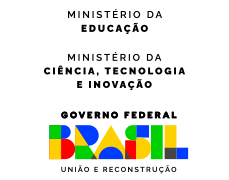Speakers
EBP – Palestras convidadas
Vincent Beffara (ENS Lyon)
“Columnar effects and pinning for a few oriented polymer models”
Resumo: “We present new results on the effect of a “columnar defect” (i.e. of a perturbation of the environment along a line) on various models related to directed polymers driven by a random two-dimensional Poisson process. Related to these are the so-called “slow-bond problem” for the asymmetric exclusion process, and a new process defined in terms of interacting and annihilating random walks. The main tool used in the study of these problems, even though the specific details differ in each case, is that of “influence percolation”, i.e. a way to relate these problems to one of one-dimensional, dependent, long-range percolation.”
Jacob van den Berg (CWI)
“Self-destructive percolation in the plane”
Resumo: “Most of this talk is about joint work with Rachel Brouwer and Balint Vagvolgyi. A few years ago two of us, motivated by certain forest-fire processes, introduced the self-destructive percolation model (abbreviated sdp). A typical configuration for the sdp model with parameters p and delta is generated in three steps: First we generate a typical configuration for the ordinary percolation model with parameter p. Next, we make all sites in the infinite occupied cluster vacant. Finally, each site that was already vacant in the beginning or made vacant by the above action, becomes occupied with probability delta. I will explain the background of this model, some general properties, a conjecture (about discontinuities of the percolation probability function), and partial continuity results.”
Stella Brassesco (IVIC)
“Front fluctuations in a stochastic reaction diffusion equation”
Resumo: A reaction diffusion equation with the reaction term being the derivative of a double well potential is a basic model for the study of phase separation and interface dynamics, and in that context it is natural to consider the effect of a small random forcing term in the solutions with initial condition close to the profile representing the interface. In the one dimensional case, when the random term is given by a space-time white noise, in the limit as the strength of the noise goes to zero and the volume, goes to infinite, the interface, under a suitable time scaling, describes a Brownian motion, provided that initially it was centered far away from the boundary. When conditions that force the two different phases at the boundary are considered, a non linear drift appears in the equation governing the limit motion of the interface (again in a suitable time scaling), which has the effect of a wall. Indeed, in a further scaling, the motion converges to a reflected Brownian motion.
Donald Dawson (Carleton Univ)
“Emergence and multi-scale behaviour in spatially structured mutation-selection systems”
Resumo: We investigate the roles of rare mutations and spatial migration in the emergence of new types in evolutionary theory in the framework of a class of spatially structured stochastic population models which incorporate the combined effects of migration, selection and mutation. The models are formulated in terms of a spatially structured system of interacting Fleming-Viot measure-valued diffusions describing a multitype population with a structured type space. The objective is to investigate the evolution of the system in multiple space and time scales and in particular to describe the emergence and spatial spread of rare selectively advantageous mutants. The main results describe the emergence of new structured types with high information content and stability in an increasing hierarchy of time scales. The decomposition of the population into families based on genealogy leads to a description of local biodiversity in terms of the transience-recurrence properties of the migration mechanism. The methods used include dual representations, non-linear demographic dynamics, random McKean-Vlasov dynamics, quasi-stationary states and hierarchical mean-field limits. This is joint work with Andreas Greven.
Paul Dupuis (Brown Univ.)
“Importance sampling for stochastic networks.”
Resumo: “Importance sampling is a technique for reducing the variance in Monte Carlo estimation. It has the potential to be especially effective when rare events are important. However, the technique as traditionally developed is poorly understood in this setting, and particularly so in the context of stochastic networks. We will discuss a technique for the construction and rigorous analysis of importance sampling schemes based on subsolutions to a related nonlinear partial differential equation (the Isaacs equation). We will discuss a variety of stochastic networks, including networks with Markov modulated arrival and service rates and the serve-the-longer service discipline.”
Vlada Limic (UBC)
“Attracting edge: does it happen and if so when?”
Resumo: “Reinforcement is observed frequently in nature and society, where beneficial interactions tend to be repeated. Edge reinforced random walker on a graph remembers the number of times each edge was traversed in the past, and decides to make the next random step with probabilities favouring places visited before. This talk will address several natural questions on asymptotic behavior of ”strongly reinforced walks”, i.e. those where the reinforcement weight function k->W(k) is reciprocally summable. It was recently established (jointly with Pierre Tarres) that the walker asymptotically keeps traversing a single random edge with probability 1 under the above summability condition and some fairly general technical assumptions. In an ongoing work (jointly with Codina Cotar) we obtain further information on the time of appearance of this attracting edge.”
Jim Pitman (U.C.Berkeley)
“Random partitions and continuum random trees.”
Resumo: “Various models of random trees provide natural ways to construct random partitions, both finite and infinite, including partitions of a unit mass into a countable collection of sub-masses. This talk will review recent work on such random partitions and partition-valued processes, including processes of fragmentation and coagulation, based on consistent combinatorial constructions and their embedding in continuous time processes related to continuum random trees. This is joint work with coauthors R. Dong, A. Gnedin, B. Haas, G. Miermont and M. Winkel.”


